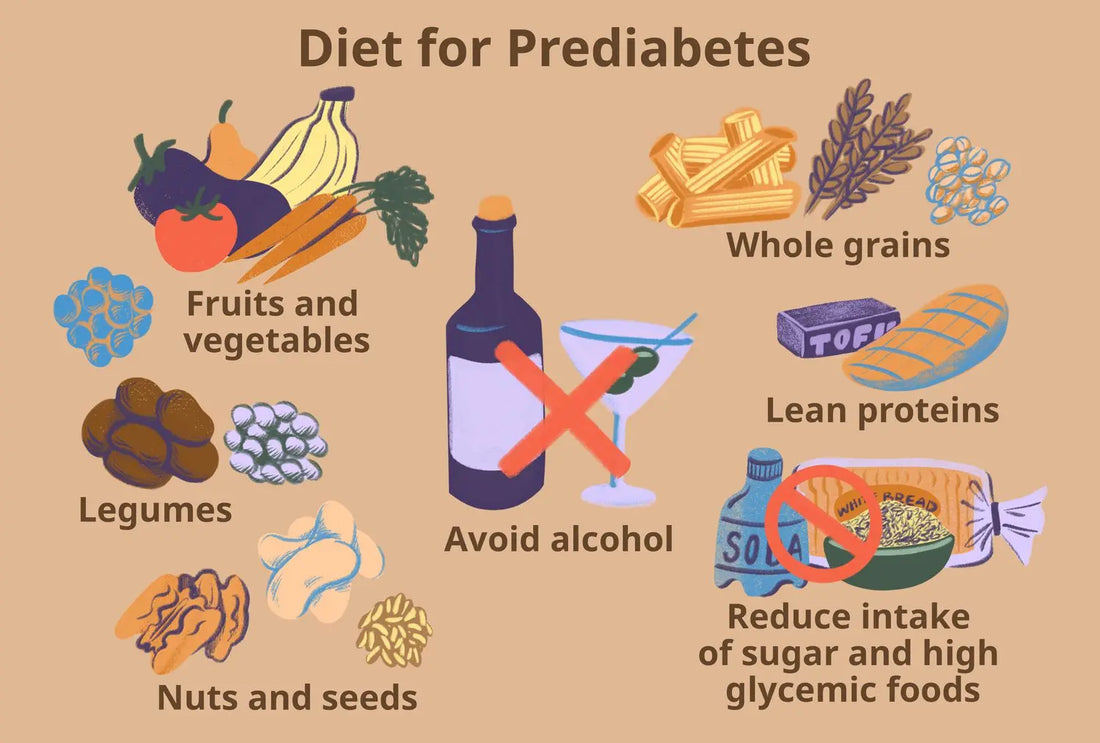Introduction
Prediabetes and various metabolic diseases have a significant relationship with diet. Modern dietary habits, influenced by evolution, psychology, lifestyle, and the food industry, have exacerbated these health issues. Understanding the root causes and identifying harmful food choices can empower individuals to make healthier decisions. Utilizing wearable technology can further enhance this process by providing personalized insights.
Main Content
The Role of Diet in Prediabetes and Metabolic Diseases
Prediabetes and metabolic disorders are closely linked to dietary habits. Poor nutrition choices contribute to insulin resistance, obesity, and other metabolic issues.
- Impact of Diet: High intake of refined sugars, unhealthy fats, and processed foods disrupts metabolic functions and increases the risk of prediabetes and type 2 diabetes.
- Nutritional Deficiencies: Modern diets often lack essential nutrients, which can impair the body's ability to regulate blood sugar levels and maintain metabolic health.
Evolutionary and Psychological Factors
Evolutionary Adaptations and Sugar Preference
Human preference for sugar has deep evolutionary roots. Our ancestors lived in environments where high-calorie foods were scarce, and those who could consume and store energy efficiently had a survival advantage.
- Sugar as a Rare Commodity: In prehistoric times, sugar was found primarily in fruits and honey, which were not available year-round. The ability to seek out and consume these high-energy foods provided a crucial energy source.
- Survival Mechanism: Consuming sugar would trigger the release of dopamine, a neurotransmitter associated with pleasure and reward, reinforcing the behavior and encouraging repeated consumption. This adaptation helped our ancestors survive periods of food scarcity by favoring energy-dense foods.
Modern Lifestyle and Sugar Abundance
Over the last 50 years, the availability of sugar has increased dramatically. However, our bodies have not evolved to handle the constant influx of high-sugar foods prevalent in modern diets.
- Dietary Shift: The advent of agriculture and, more recently, industrial food production, has made sugar widely available and affordable. Processed foods, sugary beverages, and desserts are now staple items in many diets.
- Health Burden: Unlike our ancestors, who burned off excess calories through physical activity, modern sedentary lifestyles mean we consume more calories than we expend. This imbalance leads to weight gain, insulin resistance, and metabolic disorders.
Influence of the Food Industry
The food industry has played a significant role in increasing sugar consumption, often prioritizing profit over public health.
- Product Formulation: Many processed foods are engineered to be hyper-palatable, combining sugar, fat, and salt to create addictive flavors that drive overconsumption.
- Marketing Strategies: Aggressive marketing tactics, particularly targeting children and adolescents, have normalized high-sugar diets. Products high in sugar are often marketed as convenient and desirable, overshadowing healthier options.
- Hidden Sugars: Sugar is often hidden in foods not typically associated with sweetness, such as sauces, bread, and processed meats, making it difficult for consumers to recognize their intake.
Identifying and Choosing Healthier Options
Recognizing the impact of modern dietary habits on health is the first step toward making better choices.
- Nutritional Awareness: Educating oneself about the nutritional content of foods and their effects on the body can guide healthier decisions.
- Reading Labels: Learning to read and understand food labels helps in identifying hidden sugars, unhealthy fats, and artificial additives.
Leveraging Wearable Technology
Wearable technology can provide valuable insights into how different foods affect individual health, enabling personalized dietary strategies.
- Continuous Glucose Monitoring (CGM): CGM devices track blood sugar levels in real-time, helping individuals see the immediate impact of their food choices.
- Fitness Trackers: These devices monitor physical activity, sleep patterns, and other health metrics, offering a comprehensive view of one's health.
- Personalized Feedback: By analyzing data from wearable devices, individuals can receive tailored recommendations to optimize their diet and lifestyle.
Conclusion
The relationship between modern diet and prediabetes is complex, influenced by evolutionary, psychological, lifestyle, and industry factors. Recognizing these influences allows individuals to make healthier choices. Wearable technology further aids this process by providing personalized insights, helping to establish a sustainable, health-promoting lifestyle.
Key References
- Centers for Disease Control and Prevention. "Prediabetes – Your Chance to Prevent Type 2 Diabetes." CDC, 2023.
- Fung, J. (2018). "The Diabetes Code: Prevent and Reverse Type 2 Diabetes Naturally." Greystone Books.
- Taubes, G. (2016). "The Case Against Sugar." Alfred A. Knopf.
- Sinclair, D. (2019). "Lifespan: Why We Age—and Why We Don't Have To." Atria Books.
- American Diabetes Association. "Standards of Medical Care in Diabetes—2024." Diabetes Care, 2024.






